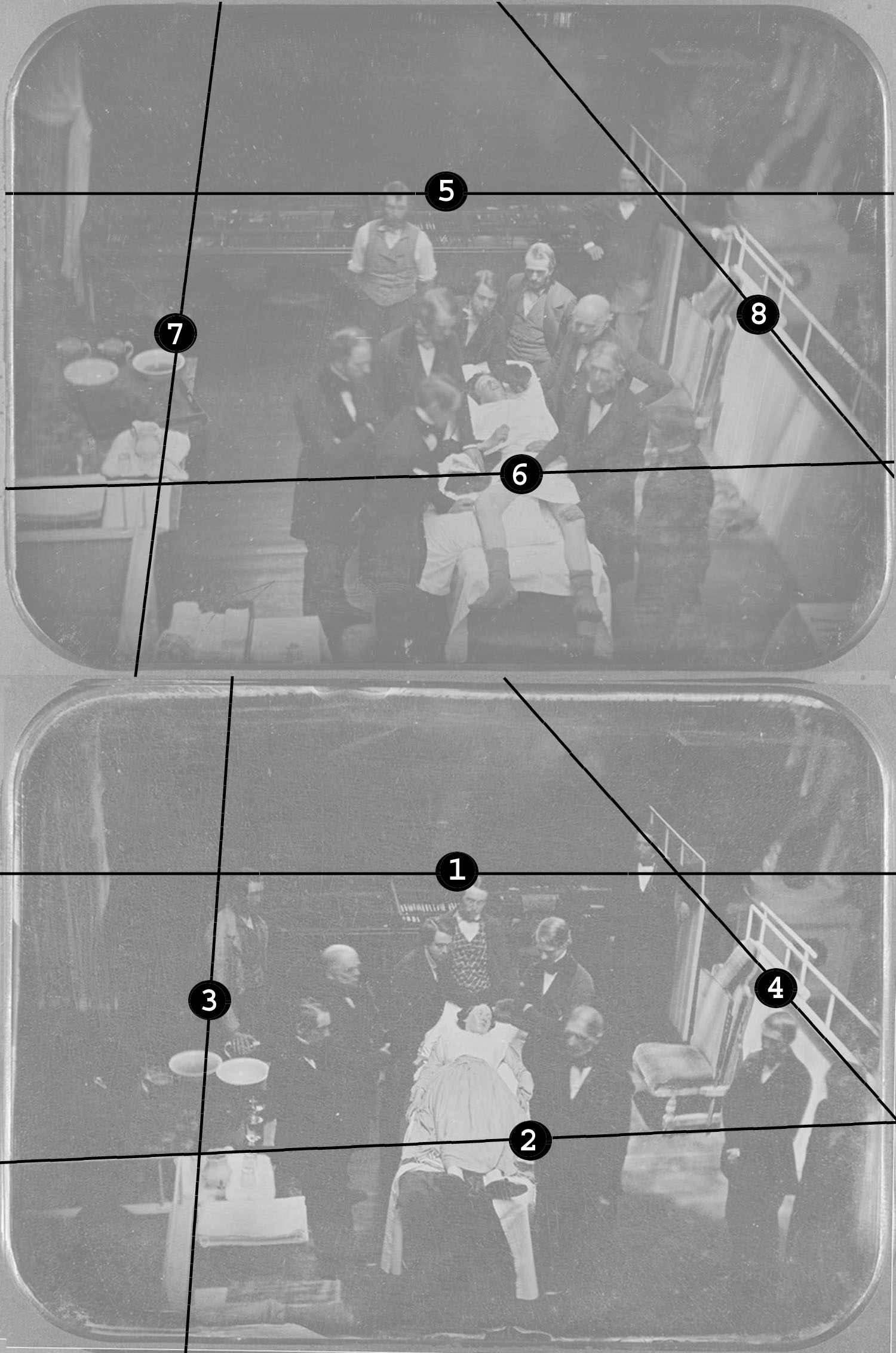

Relative dimensions of line segments (LS) in the two panels above, measured on printouts approximately half the size of the original daguerrotypes. In the top panel the optical axis has rotated to the right (reversed by the dag) and slightly down. This skewed the image plane. EDD. No. 2 (bottom panel): LS-1, 64mm.; LS-2, 98.5mm.; LS-3, 40mm.; L-S4, 47mm.; EDD No. 3 (top panel): LS-5, 65mm.; LS-6, 102mm.; LS-7, 41.5mm.; LS-8, 49.5mm.

Errors turn up in the bibliographical accounts of EDD Nos. 2-5 that I will address below. I first wanted to see if it were possible to determine the position of Hawes's camera in the amphitheater of the Bulfinch Building by comparing perspective delineations from two of the daguerreotypes representing two separate surgeries: EDD No. 2 of a female patient, and EDD No. 3 – the second image in a sequence of three photos taken of a male patient undergoing treatment for a suspected osteoma and necrosis of the fibula. This exercise would help determine if the daguerreotypes were taken on the same day or not. I first played around with the layering function in Photoshop, but this failed because EDD No. 2 has loosened over the years and is no longer level in the case.
Using the top of the long instrument cabinet in the back as a control horizon line, I leveled up and virtually recased EDD No. 2 to get the dominant perspective lines ready to compare with those in EDD No. 3. These delineations are: 1.) Top horizontal line of the instrument cabinet in the back of the room - the horizon line. 2.) Bottom horizontal line projecting from the front header of the bleachers. 3.) The sloping vertical line of the screen header that divides the room. 4.) The nearly vertical line opposite and projecting from the side railing of the bleachers.

From what I can determine, Hawes made two adjustments of his camera to center the male patient in his composition: a counter-clockwise rotation (reversed in the image) to capture more of the Apollo statue, and tilting the camera up slightly. I am least certain about the tilt, which brought more of the wall above the instrument cabinet into view, but this may be the cropping whence the daguerreotype was cradled in its case. The easiest way to perceive both rotation and tilt adjustments is by comparing the railing of the room divider where it cuts into the wreath on the plinth of the Apollo statue in the two photos. Tilting the camera up was a counterintuitive move, resulting in a composition that isn't as traditional as it is for the female subject.
This exercise demonstrates that Hawes's camera was stationed in the exact location and elevation for the two surgeries; perspective changes were a result of rotation and possibly a slight tilting of the camera. The skewing of the focal plane is accounted for by the rotation and the changes in barrel distortion. Hawes may have moved his stand, this cannot be completely ruled out. Moreover, whether or not both photographs were taken the same day can't be determined with absolute certainty by comparing the perspective delineations: if Hawes knew he was returning for future photo sessions, he would have left registration pockmarks on the floor where the legs of his tripod stood. This is standard practice performed by professional photographers.
